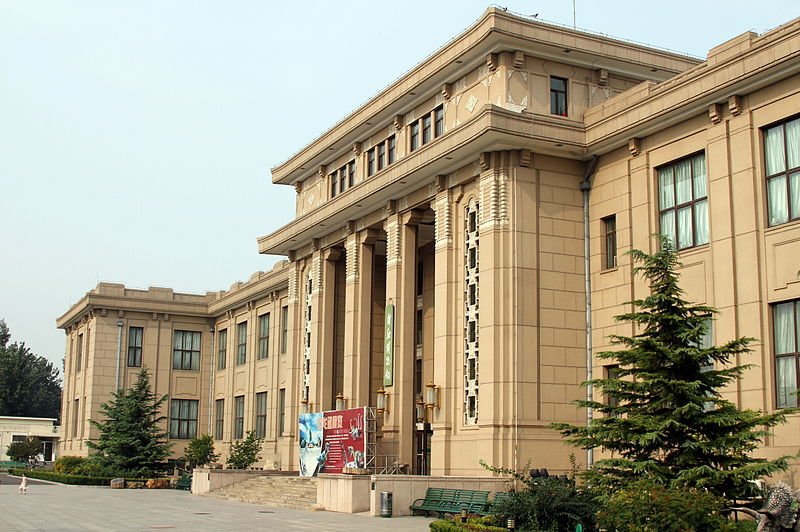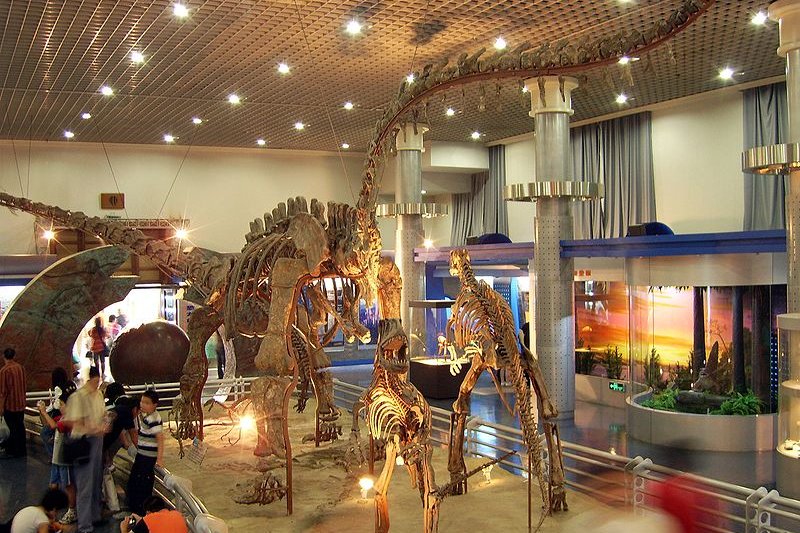 Changchun West Railway Station
Changchun West Railway StationSource: http://commons.wikimedia.org/wiki/File:Beijing_Museum_of_Natural_History_exterior_2010_Sep_04.jpg
Author: Jason Quinn

Author: Jason Quinn

The Beijing Museum of Natural History is the biggest natural history museum in China. Located at 126 Tianqiao Nan Dajie, Chongwen, the museum is housed in a cavernous 1950's building.
The collection of the Beijing Museum of Natural History is arranged into three groups: zoology, paleontology and botany. Together, there are 5,000 specimens for you to browse through.
I would say that the Paleontology Hall is the most fascinating. That's if you are into dinosaurs, as many visitors would be. You can view here the skeletal remains of prehistoric animals that roamed China from between 500 million years ago, right up "as recent as" to one million years ago.
 Beijing Museum of Natural History
Beijing Museum of Natural HistorySource: http://commons.wikimedia.org/wiki/File:Bmnh_1.jpg
Author: Shizhao

Look out for the Lufengosaurus from the Jurassic period and the spine-nosed Qingdaosaurus from the late Cretaceous period.
In the Zoology section of the Beijing Museum of Natural History, you can see a stuffed menagerie mammals, marine life and birds.
There is also a section of the museum devoted to the evolution of humans, and if you're bold enough, head down to the basement to view cross-sections of human cadavers, pickled corpses, limbs and organs.
Less impressive perhaps, but certainly more placid, are the verdant displays of the botany section.
Looking for information on Penang? Use this Map of Roads in Penang to zoom in on information about Penang, brought to you road by road.

Author: Shizhao

Look out for the Lufengosaurus from the Jurassic period and the spine-nosed Qingdaosaurus from the late Cretaceous period.
In the Zoology section of the Beijing Museum of Natural History, you can see a stuffed menagerie mammals, marine life and birds.
There is also a section of the museum devoted to the evolution of humans, and if you're bold enough, head down to the basement to view cross-sections of human cadavers, pickled corpses, limbs and organs.
Less impressive perhaps, but certainly more placid, are the verdant displays of the botany section.
How to reach the Beijing Museum of Natural History
Take the subway to the Qian Men subway station, and then a taxi to get there. You can also take bus 2, 6, 17, 20, 25, 45, 54, 59, 102, 105, 110 and 120, getting off at Tianqiao Station. The museum is open 8:30 am to 5:00 pm daily, with last entry at 4:00 pm. Admission fee is ¥15 for adults and ¥10 for children below the height of 1.2 meters. Latest updates on Penang Travel Tips
Latest updates on Penang Travel Tips
 Map of Roads in Penang
Map of Roads in Penang
Looking for information on Penang? Use this Map of Roads in Penang to zoom in on information about Penang, brought to you road by road.
Copyright © 2003-2025 Timothy Tye. All Rights Reserved.

 Go Back
Go Back